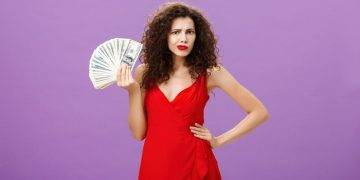Learning a new language isn’t just about grammar and polite conversation — sometimes, you need to understand how to curse like a native too. Spanish is a rich and colorful language when it comes to swearing. Whether you want to understand heated conversations, TV shows, or just fit in while joking with friends, knowing Spanish swear words can be incredibly useful.
In this article, we’ll explore popular Spanish curse words, their meanings, and how they are typically used. (Warning: This guide is NSFW — use this language responsibly!)
Why Learn Spanish Swear Words?
Understanding swear words helps you:
- Better comprehend movies, music, and everyday conversation.
- Avoid accidentally offending someone.
- Add authenticity to your Spanish-speaking skills.
- Defend yourself verbally if needed.
Swearing is deeply cultural — what’s offensive in one country may be less harsh in another. Always consider the context before using these words!
Common Spanish Swear Words
Puta (Bitch / Whore)
One of the most common Spanish insults, puta is very versatile:
Used to insult someone directly.
Often combined with other words for emphasis, e.g., hijo de puta (son of a bitch).
Example:
“¡Vete a la puta mierda!” (Go to fucking hell!)
Mierda (Shit)
Just like in English, mierda is a strong yet common curse word:
Expresses frustration or anger.
Used similarly to “shit” or “damn.”
Example:
“¡Mierda! Olvidé las llaves.” (Shit! I forgot the keys.)
Cabrón (Bastard / Asshole)
A complex insult depending on the tone:
Can be very offensive.
Among friends, sometimes used teasingly.
Example:
“¡Qué cabrón eres!” (You’re such a bastard!)
Gilipollas (Idiot / Dumbass)
A classic Spanish insult, especially common in Spain:
Means someone is stupid or annoying.
Often used in friendly banter as well.
Example:
“No seas gilipollas.” (Don’t be a dumbass.)
Coño (Pussy / Damn)
Very common but vulgar:
- Expresses anger, surprise, or frustration.
- Can be used aggressively or casually, depending on context.
Example:
“¡Coño, qué calor hace!” (Damn, it’s so hot!)
Regional Differences in Spanish Swear Words
Spanish is spoken across more than 20 countries, and swear words can vary greatly. Here’s a quick breakdown:
Spain
- Hostia (literally “host” in religious terms) is used to express shock.
- Joder (to fuck) is very common and used like “damn.”
Mexico
- Chingar (to fuck) and its many variations (like chingada madre) are everywhere.
- Pendejo (idiot) is widely used among friends and enemies alike.
Argentina
- Boludo (dumb, fool) is an affectionate insult among friends.
- Pelotudo (dumbass) is harsher and more offensive.
Colombia
- Güevón (lazy or stupid person) is common.
- Malparido (son of a bitch) is extremely offensive.
Important Tip:
Always pay attention to the local culture before trying out swear words. What’s a mild joke in Argentina might be a serious insult in Colombia!
How to Use Spanish Swear Words Correctly
Understand the Tone
Friendly vs aggressive: Some insults are harmless among friends but offensive with strangers.
Tone of voice matters a lot — a playful tone can completely change the meaning.
Context Is Everything
Casual settings allow for more relaxed language.
In formal situations or with people you don’t know well, avoid swearing.
Learn Phrases, Not Just Words
Many Spanish curse words are used as part of colorful phrases. Some examples:
- ¡Me cago en todo! (I shit on everything! — expresses extreme frustration.)
- ¡Vete a la mierda! (Go to hell!)
- ¡Qué hijo de puta! (What a son of a bitch!)
Funny Spanish Swear Word Combinations
Native speakers love mixing and matching swear words. Here are a few hilarious combos:
- La puta madre que te parió (The whore mother that gave birth to you)
- Me cago en la leche (I shit in the milk) — common in Spain
- Estás hecho una mierda (You’re a mess / You’re screwed up)
These creative expressions show just how flexible (and funny) Spanish swearing can be.
Caution: When NOT to Use Spanish Swear Words
- With strangers: Until you gauge their level of comfort.
- In professional settings: Always keep your language clean at work.
- Around children or elderly people: Respect generational differences in language.
Bottom line: Learn swear words so you can recognize them — not necessarily so you use them right away.
Final Thoughts on Spanish Swear Words
Spanish swear words are colorful, expressive, and a huge part of real-life conversation. Whether you’re watching Spanish TV shows, hanging out with native speakers, or traveling, understanding these words gives you a deeper, more authentic feel for the language.
Just remember:
- Context is key.
- Tone can change everything.
- When in doubt, observe before you imitate.










